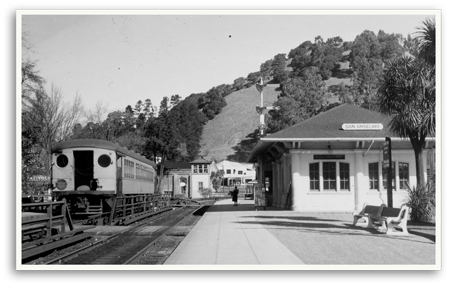Circa 1940
Think about it: A clean and green, electric-powered rail system with stations in Fairfax, San Rafael, Mill Valley and San Anselmo, all connecting to a terminal in Sausalito where commuters could take a ferry into San Francisco. Its only sound was a low moaning air whistle. As for the electric power that made this train silent? That came from the High Sierras via 150 miles of transmission line that was, at the time, the world’s longest. With minimal fanfare and the utmost of confidence, the Northwestern Pacific Railroad’s interurban electric cars began operating on August 16, 1903. So what went wrong? The railroad’s formula lacked one key ingredient: people. At the onset, Marin had but 16,000 residents, and by the mid-1930s the county’s population was only 41,000. In addition, by then most Marin households owned at least one automobile. “At best, no more than 20,000 fares — perhaps representing 10,000 people — were collected in a single day,” writes historian Harre W. Demoro in Electric Railway Pioneer (Interurban Press, 1983). The death knell came on May 28, 1937, when cars, driven mostly by commuters, began traversing the Golden Gate Bridge into the city. Sadly, Marin County’s last interurban electric train ran on February 28, 1941.


